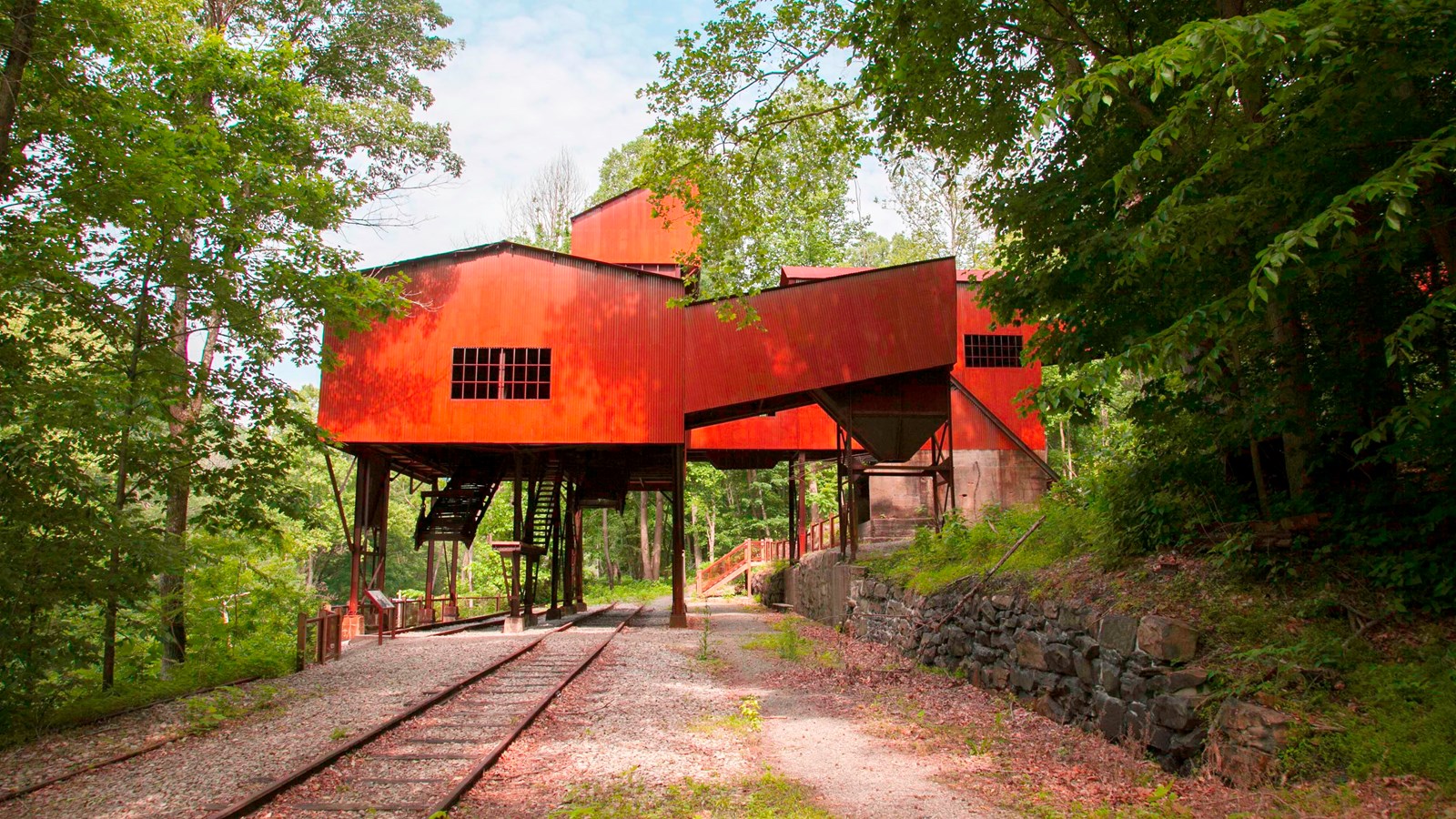Last updated: August 10, 2022
Place
Nuttallburg

NPS/Louise McLaughlin
Historical/Interpretive Information/Exhibits, Parking - Auto, Scenic View/Photo Spot, Toilet - Vault/Composting, Trailhead
African American Heritage Driving Tour Stop 4: African American Life in a Coal Camp
In the late 1800s, coal became King in West Virginia. Over a sixty-year period, hundreds of coal mines were opened throughout southern West Virginia. To dig the coal, thousands of native Appalachians, African Americans, and immigrants from Europe migrated to the coal fields to work in the mines. To support the mining operations and their workers, “coal camps” became as numerous as the coal mines. Company towns, or “coal camps” as they were commonly known, were built and owned by the coal companies themselves. They provided miners and their families a place to live, a place to buy goods and services, as well as opportunities for personal and recreational activities. In 1930, there were nearly 500 coal company towns in West Virginia.
John Nuttall purchased a large tract of land in 1870 on the New River along Short Creek. With the completion of the C&O Railroad in 1873, he opened the Nuttallburg mine and began building his company town which came to be called Nuttallburg. After John Nuttall died in 1897 his heirs ran Nuttallburg until Henry Ford leased the town’s mines to provide coal for his company steel mills in the 1920s. Nuttallburg passed through three more owners after Henry Ford, then ceased production in 1958.
For the full story go to: African American Life in a Coal Camp: Nuttallburg
Driving Directions:
Use caution when driving to Nuttallburg. The road to Nuttallburg (Keeneys Creek Road) is narrow, winding, and steep. Some places are paved while some places are gravel. Much of the road is one lane, meaning that drivers will need to pull off the side of the road to allow for passing vehicles. Large vehicles and trailers are not advisable.
Physical Address: Keeneys Creek Road
GPS Coordinates: N38.050158 -W81.039922
From Beckley, WV: Take Highway 41 north (Stanaford Road) and travel 29 miles to Highway 60. Turn left on Highway 60 west and travel 5.3 miles to Lansing Edmond Road (Route 82). Turn left on Lansing Edmond Road and travel to junction of Lansing Edmond Road and Keeneys Creek Road. Continue straight on Keeneys Creek Road (Route 85/2) and travel 4.1 miles to the parking area at the Nuttallburg Historic Site.
From Fayetteville, WV: Take Highway 19 north to the exit for Highway 60. Turn left on Highway 60 east and travel four miles to Lansing Edmond Road (Route 82) Turn right on Lansing Edmond Road and travel to junction of Lansing Edmond Road and Keeneys Creek Road. Continue straight on Keeneys Creek Road (Route 85/2) and travel 4.1 miles to the parking area at the Nuttallburg Historic Site.
Directions to next Tour Stop:
Hawk's Nest Workers Memorial and Grave Site
Physical Address: 98 Hilltop Drive, Lookout, WV 26679
GPS Coordinates: N38.234467 -W80.852690
From Nuttallburg Historic Site, return 6 miles up Keeneys Creek Road (Route 85/2) and Lansing Edmond Road (Route 82) to Highway 60. Turn left on Highway 60 west and travel 4 miles to Highway 19. Turn right on Highway 19 north and travel 12.5 miles to Whippoorwill Road (if you cross Summersville Lake you have gone ½ mile to far) Turn left on Whippoorwill Road and an immediate right onto Hilltop Drive. Tour Stop (cemetery site) is on the right at the end of the road.
